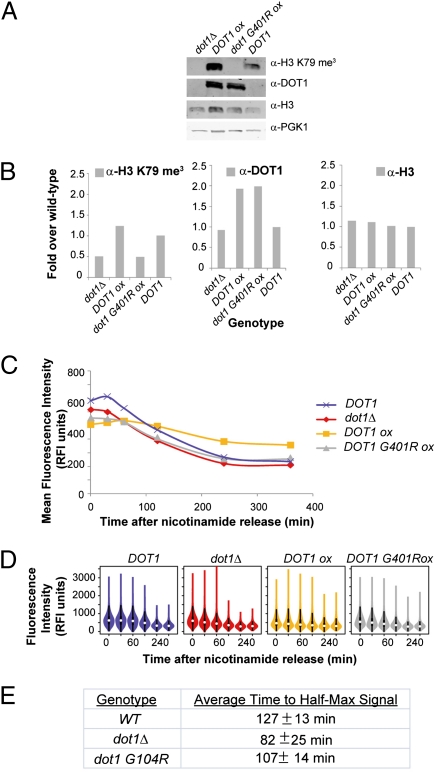Fig. 3.
Overexpression of catalytically active and inactive Dot1. Cells carrying the overexpression construct pGAL1::DOT1 (labeled DOT1-ox) or the catalytically inactive overexpression construct pGAL1::dot1 G401R were tested for their kinetics of silencing establishment. dot1Δ cells and DOT1 cells were used as controls in these assays. (A) Strains grown in galactose medium were tested for global H3 K79 me3 levels by protein immunoblot with α-H3 K79 me3 antibody. Due to the overexpression of Dot1 proteins, the wild-type levels of Dot1 cannot be markedly observed at these exposure levels. However, the presence of wild-type Dot1 is confirmed by its enzymatic property, H3 K79 trimethylation. (B) H3 K79 me3 signals were quantified and normalized to H3 levels. Dot1 and H3 signals were quantified and normalized to PGK1. (C) Silencing establishment time-course assays of strains were performed under inducing (galactose) conditions. Mean fluorescence intensities are plotted against time after release from nicotinamide. (D) Violin plots indicate the distribution of the data from C. (E) The time to half-maximal signal intensity was calculated for each strain in each replicate and averaged over the three replicates.

